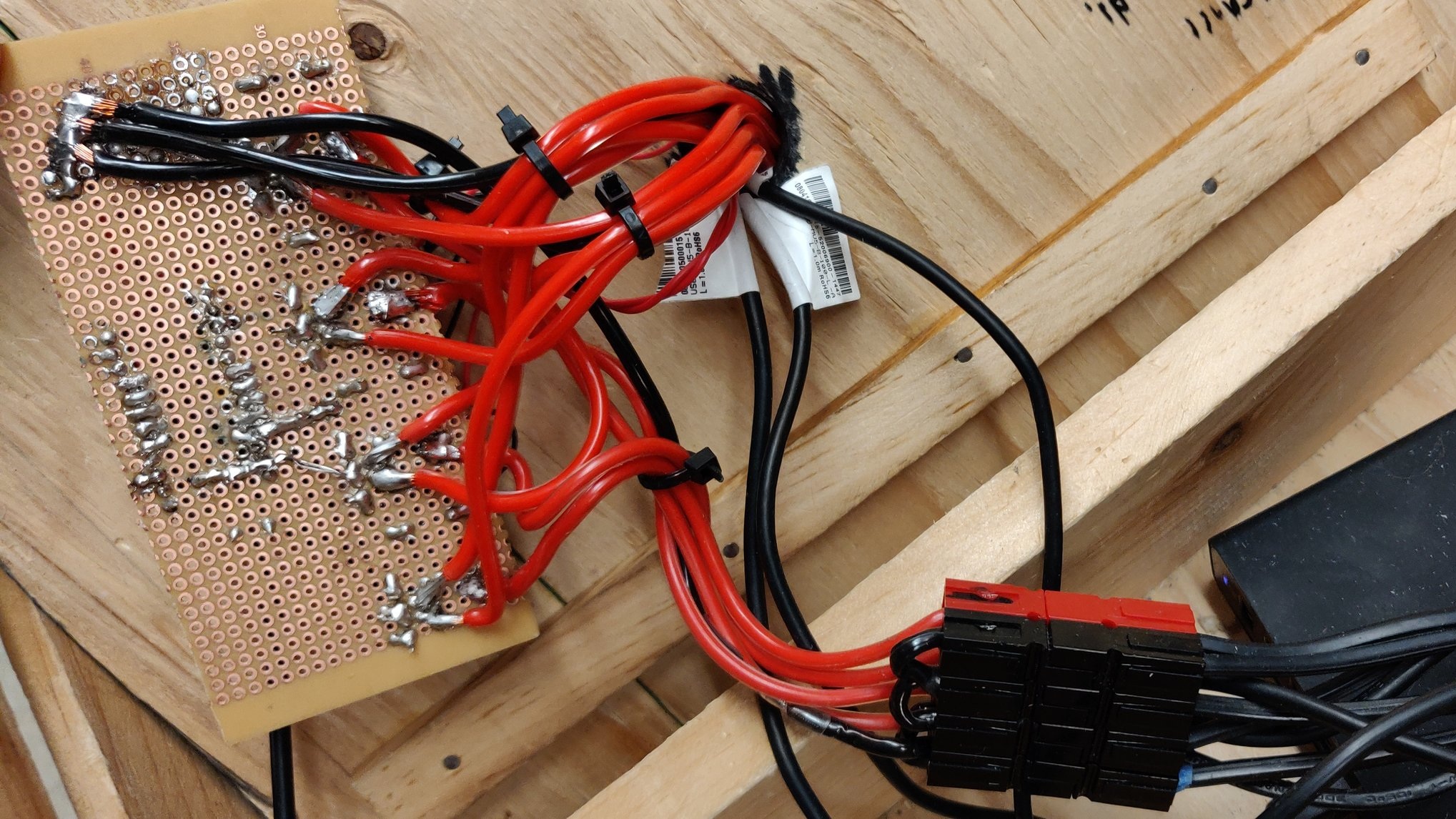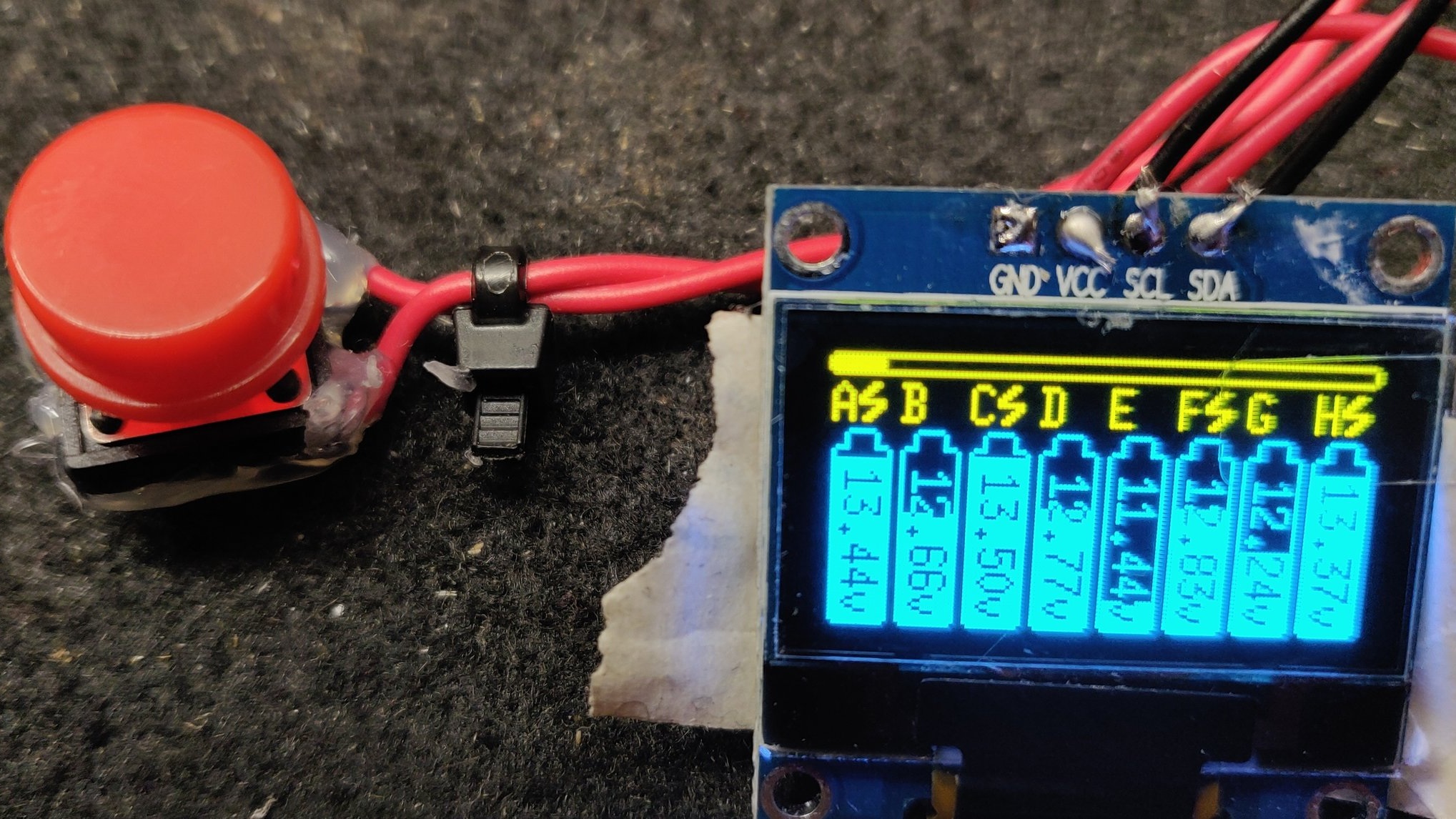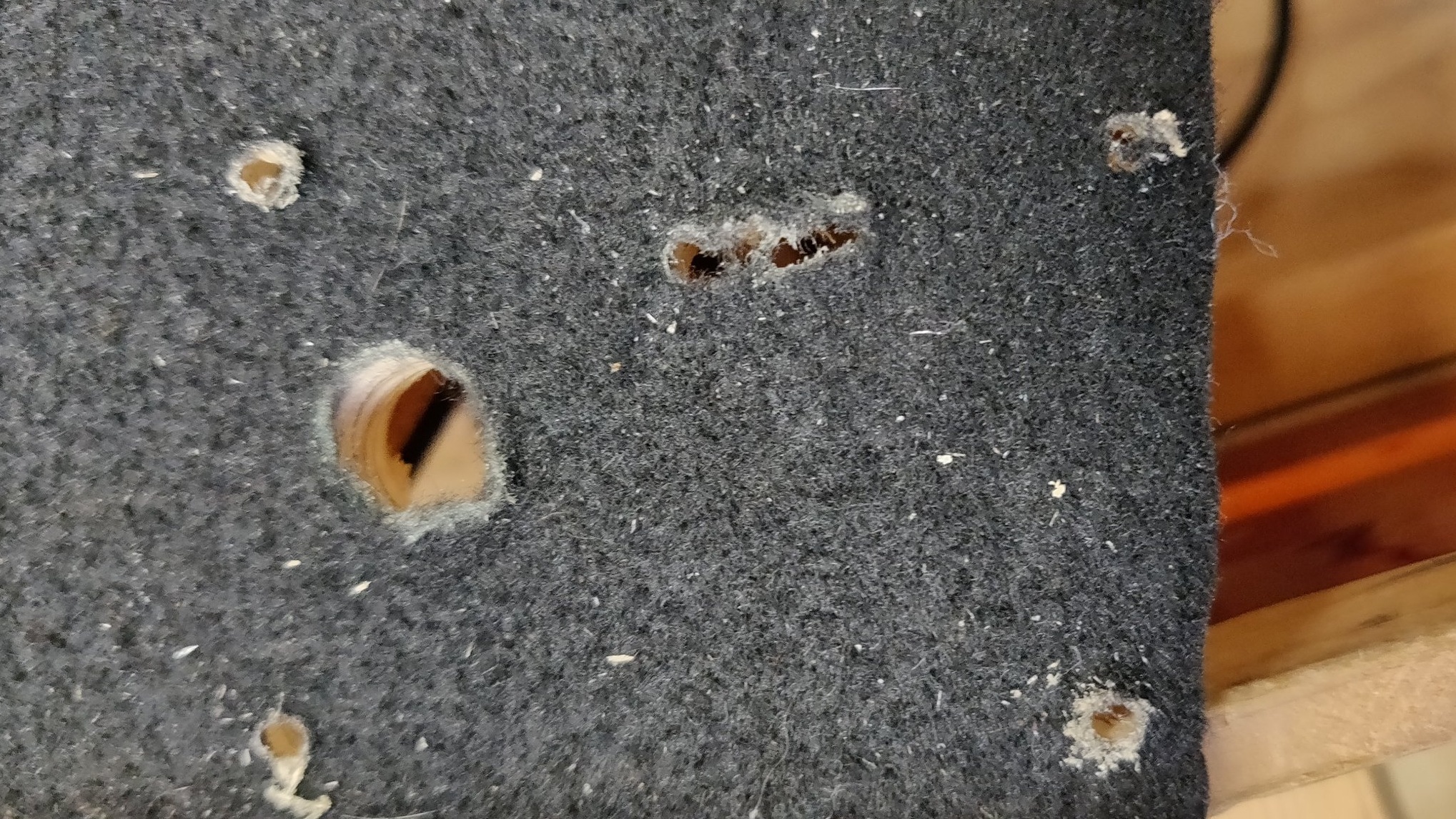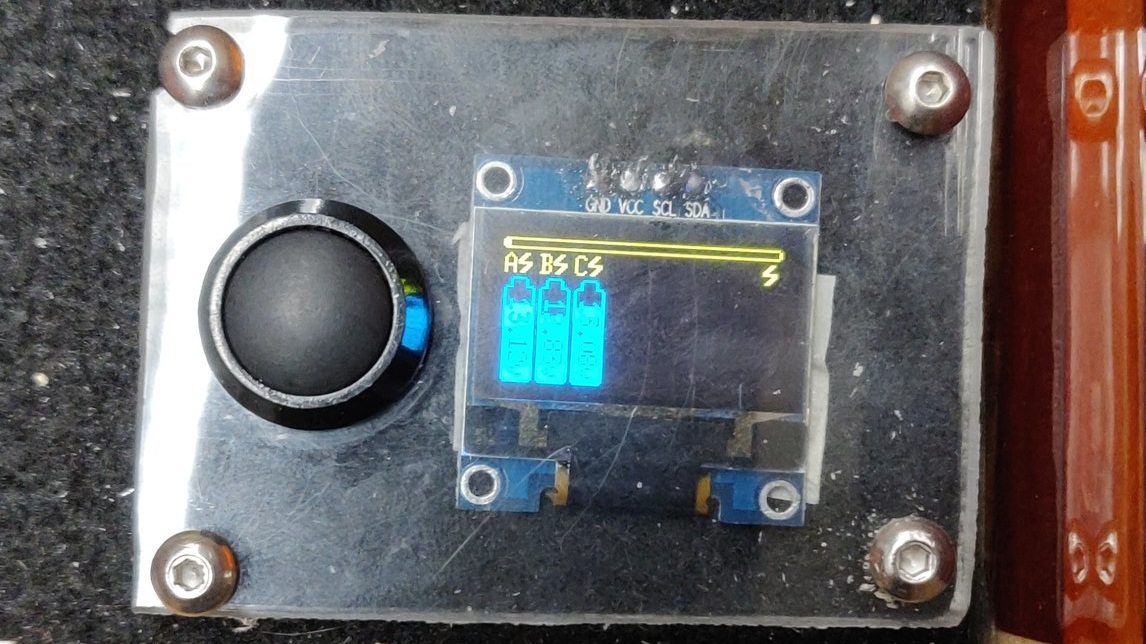FTC Battery Charge Controller:
I made this project in fall 2018 to optimize battery charging for my robotics team.
The previous solution involved a wooden “battery box” which housed 4 chargers for batteries was well as chargers for the phones we use to control the robot. The team has about 10 batteries in active circulation, and a lot of guesswork was involved in trying to find the most charged battery and optimizing the use of the 4 chargers.
The new system utilizes the same 4 chargers, but uses a system of relays to effectively manage the charging of 8 batteries. Batteries which are full are automatically disconnected, and the system prioritizes batteries in order of how close they are to being fully charged. This way, during intense competitions my controller maximizes the number of fully charged batteries, instead of wasting time trying to charge almost empty ones. Since there are still only 4 chargers, the system can only charge 4 batteries at a time, but it can intelligently choose which batteries are charging.
There is also a display which shows the voltage of each connected battery and which batteries are currently being charged. Due to the wiring scheme, the relays must be cycled in order to read the voltages. Thus, to minimize wear on the relay contacts, the voltages only update every 5 minutes. There is also a button to update on demand.
I designed and build the device, and programmed it with the help of a team member.
The code can be found here: https://github.com/SpyGuyIan/2049BatteryBox
The picture on the left is a view of the top side of the circuit board. The entire device is controlled by an arduino pro mini, whose 8 analog inputs are used to read the battery voltages, and 11 GPIO pins are used to interface with the display, power the relays and detect button presses. On each analog input is a resistor voltage divider used to convert the incoming 11 - 20V from the batteries / chargers to 2.75 - 5V for the arduino to measure. Each relay is SPDT and has the common pin connected to the charger and the NC/NO pins connected to one set of output plugs each.





